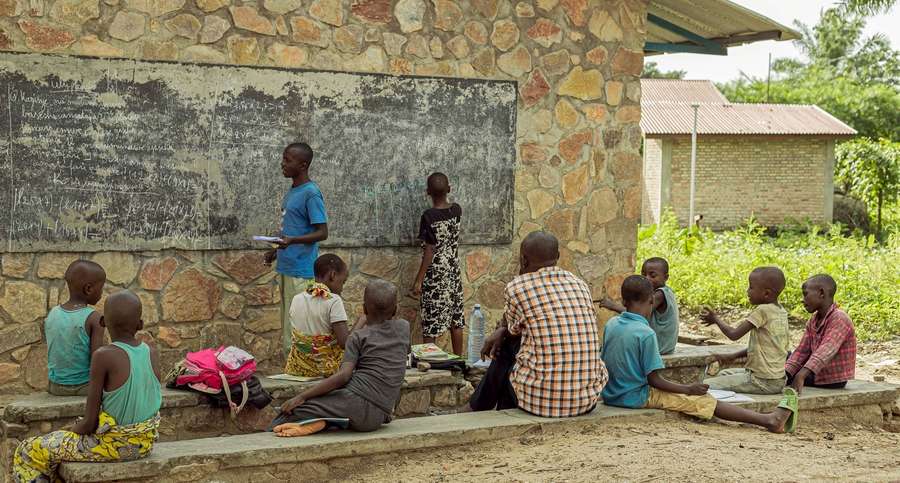In order to comprehensively understand the issue of poverty and how we alleviate it, we must recognise the role of biodiversity. Marginalised people depend on biodiversity for food security. Because of the need for poverty alleviation, there is a risk that conservation efforts could exclude areas which do not immediately impact human well-being, and by doing so, fail to adequately conserve biodiversity. We must focus on promoting biodiversity for poverty alleviation within the broader perspective of Thrivability for both communities and ecosystems.

Source: Pexels
poverty alleviation: A definition
Poverty alleviation aims to improve the quality of life of people living below the poverty line. It is these people who are most affected by the loss of biodiversity. Biodiversity loss undermines the food security, nutrition, and health of the rural poor in particular, and increases their vulnerability to external shocks (FAO, 2019).
Biodiversity and Human Well-Being
Marginalised poor people depend on biodiversity for natural resources (Billé et al., 2012). They are therefore likely to negatively impacted by its degradation. The question is how biodiversity conservation can be linked with poverty alleviation. This is much more complex than is often assumed.
Biodiversity directly contributes to people’s livelihoods through ecosystem provisioning services. Indeed, people’s opportunities for income can depend heavily on the abundance and availability of specific components of biodiversity. Examples include forest resources providing food, medicine, fuel and tradable goods (Roe et al., 2011). We must ensure that biodiversity abundance and availability thrives, using tools like the THRIVE Framework to help achieve this. This way, we can emphasise holistic well-being and sustainable practices.
Biodiversity variability plays a very important role in long term well-being (Biodiversity and Health, n.d.). However, the analysis and promotion of biodiversity variability are given insufficient attention. Using tools like the THRIVE platform is essential for assessing well-being by measuring what matters most. It’s not just about the quantity of a few specific foods. We need variety for diverse nutritional needs.
Biodiversity is essential to food provision through enabling access to a diverse range of locally-produced agricultural and wild sources of nutrition. This includes those food provisions that supply micronutrients and flavourings. It also supports food production through soil formation and land productivity, pest and disease control in agricultural systems, and pollination. As an example of this last case, Ricketts et al. (2004) found that the presence of forest-based wild pollinators increased coffee yields in Costa Rica by 20%. Forest-based wild pollinators also improved the quality for farms located less than one kilometre from the forest. O’Farrell et al. (2007) suggested that biodiversity increases land productivity in semi-arid rangelands.

Source: Unsplash
The Relationship Between Biodiversity and Poverty Alleviation
Poverty reduction depends on resource conservation. Many poor and marginalised people depend on species in biodiverse ecosystems for their livelihoods. Therefore, their livelihoods can be improved through appropriate conservation activities (Adams, 2020). Conservation should be a tool for achieving poverty reduction. The sustainable use of natural resources are a foundation for strategies to reduce poverty and achieve social justice.
This position might lead to the rejection of a protected-area strategy. This is because protected areas are unlikely to achieve poverty reduction goals. However, there are exceptions under special circumstances such as ecotourism revenues. Alternative approaches would include the sustainable use of living resources to optimise economic return on poor communities (Hutton & Leader-Williams, 2003). Furthermore, Roe et al. (2013) found a positive link between biodiversity conservation and poverty alleviation.
There is some division over the direction of that link. For instance, is conservation a means to poverty alleviation, or is poverty alleviation a means to conservation? Conservation and development organisations appear equally divided in their views. Extreme positions often dominate policy debates, hindering progress towards effective, integrated approaches. But the reality is everything is connected and each change has to be considered in relation to the the whole picture. We must critically consider all sides, as part of a holistic approach.

Source: Pexels
The Conflict Between Biodiversity And Poverty Alleviation
Poverty is a critical constraint on conservation (Fisher et al. 2020). It limits conservation success, and as a result, conservation efforts will fail if they do not incorporate poverty alleviation into its thinking. In a scenario where poor people are overharvesting wild species, poaching critical species, or colonising and cultivating biodiverse land in order to survive, and if the political or economic costs of stopping them are prohibitive, then biodiversity will suffer (Barrettt et al., 2011). To achieve its objective, biodiversity conservation efforts must provide effective contributions to poverty reduction. This includes both net benefits to economically disadvantaged people and the avoidance of significant local costs to any social group.

Source: Research Gate
moving forward
Poverty should not be seen as a constraint to biodiversity. Conservation of biodiversity is a tool for achieving poverty reduction. Achieving it involves sustainably using natural resources while striving for environmental and social justice (Roe et al., 2013). To successfully implement this vision, it is essential to simultaneously inform government policy makers and local communities about the economic and social benefits of conservation efforts. If nature is thriving, they can thrive too.

Source: Pexels
why Is it essential that we focus on biodiversity and poverty alleviation?
Biodiversity is essential for the processes that support the ability of all life on Earth to thrive, including humans (The Royal Society, n.d.). Tackling biodiversity loss is therefore critical to international efforts to reduce poverty. Research can focus on various goods and services whose value is rarely factored into policymaking. This in part because it is hard to quantify these benefits in financial terms (Biodiversity and Poverty Reduction, n.d.). But a holistic approach to this subject means recognising that thriving biodiversity means thriving goods and services. Only by adopting this holistic approach can we succeed in the race toward thrivability.
achieving the United Nations Sustainable Development Goals (SDGs)
Sustainable Development Goal 15 of the 2030 Agenda for Sustainable Development exists to “protect, restore and promote sustainable use of terrestrial ecosystems, sustainably manage forests, combat desertification, and halt and reverse land degradation and halt biodiversity loss” (Life on Land, n.d.). Therefore, maximising the conservation of natural capital and restoring the potential of ecosystems are essential to sustaining life on this planet. Where most of the economic activities are coupled with environmental degradation, the reestablishment of ecosystem attributes is a vital part of global conservation strategies (Protecting, conserving and enhancing natural capital, 2020).
A Thrivable Framework
Within the THRIVE Framework, we examine critical issues and potential solutions, with our ultimate aim being thrivability. We scrutinise the intricate connection between globalisation and global development, and their profound implications for poverty and biodiversity.
Simultaneously, a transformative paradigm shift is underway in the context of poverty alleviation and its impact on biodiversity. Our focus lies in policies that bridge the economic disparities within and between nations, striving to uplift those in poverty, while respecting the need for nature to thrive.
Biodiversity and poverty alleviation are a significant part of our mission. We ardently believe that we can support both these essential aspects simultaneously. Our rigorous analyses and predictive models under the THRIVE Framework contribute to sustainable solutions. They demonstrate that the pursuit of human well-being and environmental preservation can coexist harmoniously.
We invite you to explore our commitment to a future that revolves around biodiversity and poverty alleviation, on our website. Engage with our insightful content, including blogs and podcasts, and join our live webinar discussions on these pressing topics. Stay informed about our ongoing initiatives by signing up for our newsletter as we work towards a thrivable world for all.

